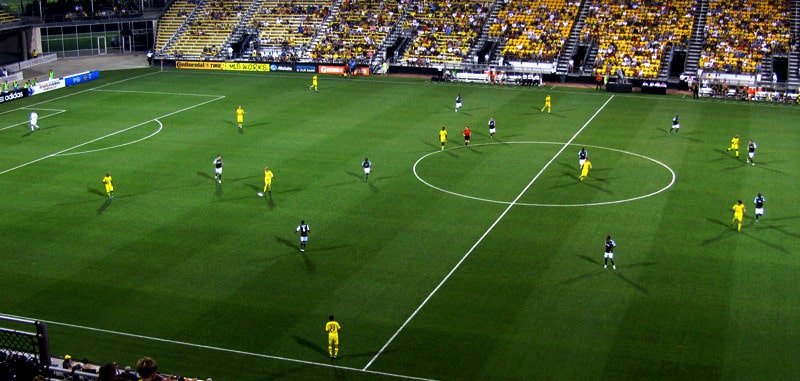
As a general rule, one needs to learn the rules to break them. I completely accept this rule but since I have had no formal coaching training, I would venture to experiment with football tactics from the standpoint of a raving fan.
As we know, the best teams nowadays play fluid football: meaning they swap formations mid-play depending on the situation. Those who stick to more rigid formations risk getting hit at their particular weakest spots.
Here are a few suggestions of formations which, depspite their rigidity, might work in the Premier League:
The 5-3-2-0 formation
Zero strikers. As crazy as it sounds, Vicente Del Bosque used a similar but more gentle on the defensive side approach with 4-5-0 when he was at the helm of Spain. It worked wonders, maybe because he had Andres Iniesta and Xavi–versatile midfielders who could score when needed.
In the 5-3-2-0 formation, you have three centre backs, two wing backs, three holding midfielders and two short but quick attacking midfielders. The idea is with six defenders and three holding midfielders, the team would be a rock defensively. It would invite the opposition to take residence in your team’s half which would give chances for quick counter-attacks using the wing backs.
This ultra-defensive formation would be quite frustrating for oppositional teams as it would take something special to break it down, while they remain vulnerable to long balls.
The players who will do wonders with this formation are two tireless wing-backs who can defend and attack; a very tall centre back to sweep off the aerial threats, and two quick centre backs with excellent positional sense. A very strong holding midfielder with great tackling ability and two others with great passing abilities–they will all cover and intercept balls and build the game through the centre.
Two short and fast attacking midfielders, preferably set-pieces experts with long shot ability. Stir well.
Advantages: very difficult to concede a goal.
Weaknesses: might be difficult to score one too.
The 3-2-3-2 formation
This is similar to Barcelona’s 3-2-2-2-1 formation but with a few peculiarities. Three central defenders at the back, two defensive midfielders placed slightly wider, two midfielders anchored around the centre of the pitch, one No.10, and two centre forwards.
This formation is attacking. It provides plenty of creativity for the strikers to take advantage of. Its disadvantages may stem from its lack of width, hence placing the two holding midfielders slightly wider. Here come the peculiarities on how to deal defending on the wings.
Two very tall centre backs with good positional sense are in demand here. They will neutralize aerial threats as the lack of wide players will ensure lots of crosses to defend against. One other very pacey centre-back to deal with any onrushes coming from the centre. The two holding midfielders should focus to provide cover in fending off oncoming central attacks but should also sink back to deal with crosses. They should be good passers too so they can move the ball to the two central midfielders.
Understandably, the midfield will be very crowded so these midfielders should be strong and comfortable on the ball so they could fend off pressure and suck in players around them. The No.10 will provide plenty of creativity to feed a lurking fox-in-the-box strikers. They should also possess a good long-range shot in case the strikers are tightly marked.
Advantages: Creative and attacking formation.
Disadvantages: Might be vulnerable on the wings.
The 4-1-1-4 formation
While the 4-2-4 formation is not in any way new, but the suggested variation is slightly different. In this variation, you have standard two centre backs, two wing-backs, one holding midfielder, one central midfielder, two wingers and two centre forwards.
The emphasis of the formation would be on crossing. The wing backs will defend and rush forward to support the wingers, while the holding midfielder will work together with the central fielder to fend off attacks from the centre and provide balls to the wingers or wing-backs. The wide-men will overlap ensuring that there is high chance of executing a cross.
The wingers should also help in defense and cut inside to provide cover for the central midfielders, which means they should be workhorses.
At the front, the centre forwards should be in the mold of Miroslav Klose: tall and strong with good positioning and clinical finishing. This will enable them to be deadly in the air, plus pose a threat with long balls, which could be a second method of attacks.
Advantages: Increased chances from scoring from dead-ball situations and crosses. Strong presence on the wings.
Disadvantages: A hole in the centre which can be exploited.
Author


The Football Coach
How To Win Football Bets: A Betting Strategy To Help You Win Every Time

The Football Coach
How long is a football pitch? The complete pitch size guide












